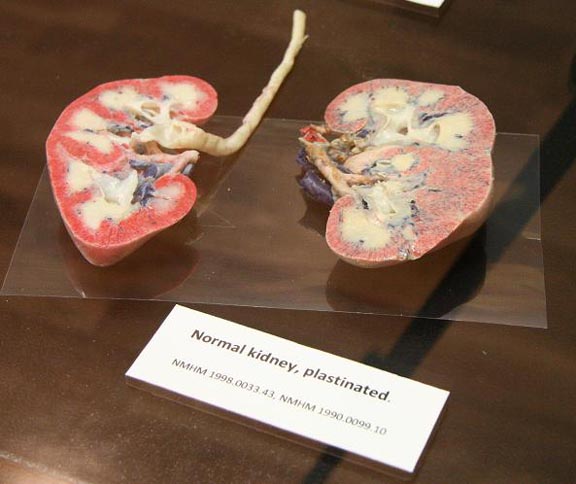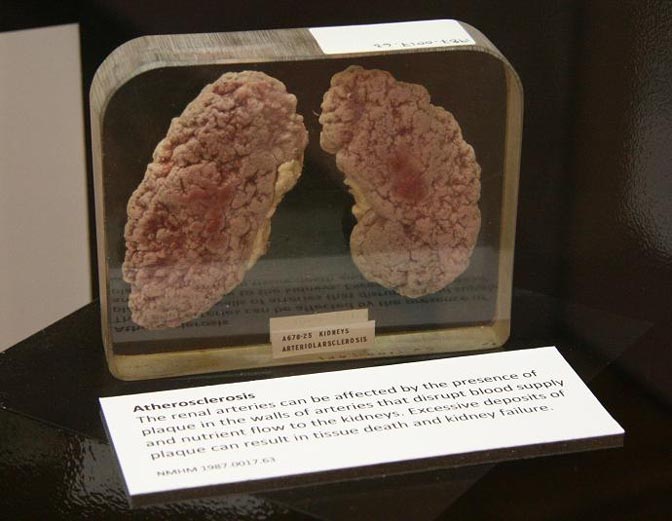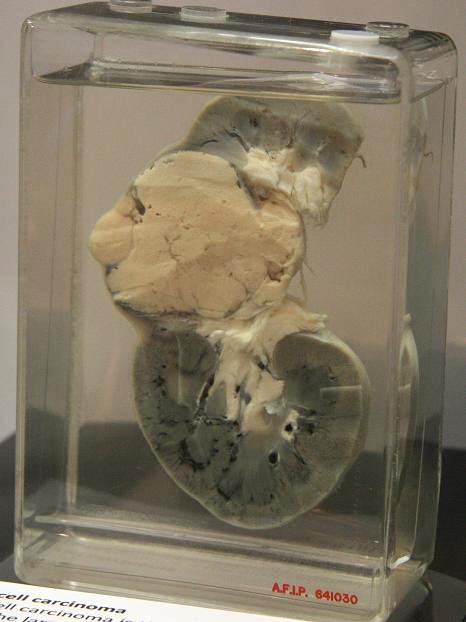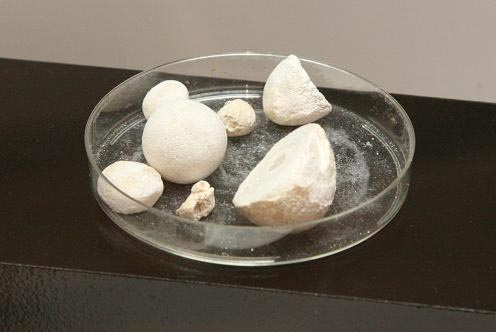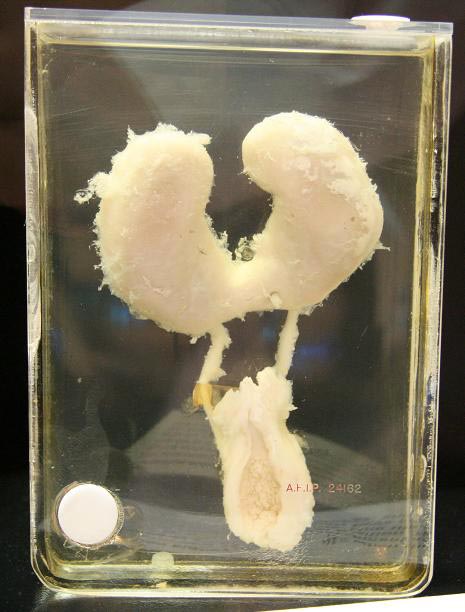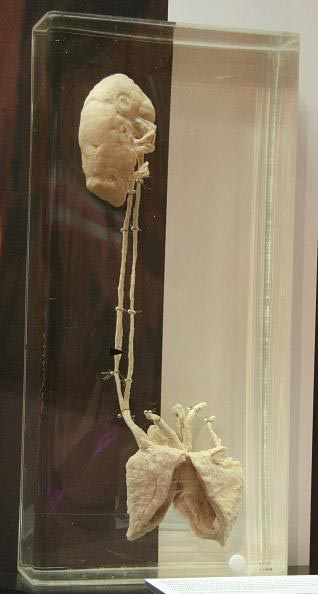Visibly Human Health and Disease in the Human Body
The Urinary System
 In the human adult water makes up approximately 60% of body weight. The kidney maintains the volume and composition of fluid within the body.
In the human adult water makes up approximately 60% of body weight. The kidney maintains the volume and composition of fluid within the body.
The kidneys are paired, bean-shaped organs that lie at the back of the abdominal cavity on either side of the spinal column. Each adult kidney weighs about 150 grams (6 ounces).
The kidneys have several important functions, making them more than simple "garbage disposal" organs that rid the body of wastes. Functions include fluid regulation, hormone synthesis and nitrogen excretion. The kidneys also filter some drugs and their end products, food additives and other foreign substances from the body.
Our kidneys regulate the amount of water, salt, sugars, proteins and other constituents in our bodies by filtering blood plasma and reabsorbing into the blood those substances the body needs.
The kidneys release three important hormones: erythropoietin affects red blood cell production and renin and kallikrein influence blood pressure.
The ureters are drainage tubes that open into the wall of the bladder. Their openings are normally closed by the pressure of the urine in the bladder. They open only when urine is forced into them from the renal pelvis.
The bladder is the holding tank for the urinary system. It resembles a balloon. When it is empty, it is wrinkled and collapsed. As the bladder begins to fill, the first urge to urinate is felt when the bladder contains about 150 ml (5 oz). The pressure is greatest when the bladder is "full" at about 400 ml (13 oz).
Urine passes out of the body via the urethra in both males and females. The release of the contents of a full bladder is mainly controlled by a decrease in levels of antidiuretic hormone or ADH which occurs when increased amounts of water are absorbed in the blood.

- Visibly Human Health and Disease in the Human Body
- The Cardiovascular System
- The Urinary System
- Respiratory System
- The Lymphatic System
- The Musculoskeletal System
- The Liver and Hepatic System
- The Digestive System
- The Brain and Nervous System
- Psychiatric Patients at Forest Glen
- Skeleton of Spanish American War Veteran Showing Evidence of Severe Arthritis




